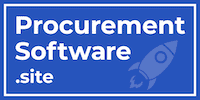SaaS contract negotiations demand strategic maneuvering. Discover the key levers in procurement to secure optimal terms and conditions for your software and cloud contracts.
In the ever-evolving landscape of Software as a Service (SaaS), effective contract negotiations are paramount. Securing favorable terms and conditions can significantly impact your organization’s bottom line. In this comprehensive guide, we unveil the top procurement levers that empower you to navigate the complexities of SaaS and cloud contract negotiations successfully. From volume commitments to data security, each lever is meticulously examined, providing you with the insights needed to master the art of negotiation and optimize the value derived from your software investments. Let’s delve into the strategies that will elevate your SaaS contract negotiations to new heights.
1) Volume Commitments: Unlocking Discounts
Commit to higher volumes to unlock favorable pricing. Negotiate discounts or enhanced terms by demonstrating a substantial commitment to software or cloud services.
2) Contract Duration: Balancing Flexibility and Pricing
Strike a balance between contract length and flexibility. Longer-term contracts may yield better pricing, while shorter terms provide agility for evolving organizational needs.
3) Pricing Tiers: Tailoring Costs to Usage
Request tiered pricing based on usage levels. Align costs with consumption, ensuring that as your usage increases, the per-unit cost decreases.
4) Bundled Services: Maximizing Negotiation Power
Bundle multiple services for increased negotiation power. Leverage a consolidated approach to potentially secure discounts and advantageous terms.
5) Service Level Agreements (SLAs): Ensuring Quality Delivery
Define clear SLAs to ensure service quality and availability. Include penalties for non-compliance, holding vendors accountable for their commitments.
6) Flexibility and Scalability: Adapting to Change
Negotiate terms that accommodate organizational growth or contraction. Ensure scalability without incurring exorbitant fees for adapting to changing needs.
7) Termination Rights: Clear Exits and Data Ownership
Include clear exit clauses defining termination terms. Safeguard data ownership and transition services, providing a smooth exit strategy.
8) Audit Rights: Monitoring Compliance
Secure the right to audit vendor compliance. Especially crucial in software licensing, auditing ensures adherence to agreed-upon terms.
9) License Metrics: Aligning with Actual Usage
Define license metrics matching actual usage. Whether user-based, device-based, or consumption-based, align metrics with your software usage.
10) Renewal Terms: Negotiating Future Commitments
Clearly outline renewal terms, automatic renewals, and renegotiation possibilities. Ensure the ability to revisit pricing and terms at the end of each term.
11) Data Security and Privacy: Stringent Safeguards
Establish stringent data security and privacy requirements. Safeguard sensitive information in your software and cloud contracts.
12) Vendor Support and Maintenance: Tailoring to Business Needs
Negotiate support and maintenance terms tailored to your business needs. Specify response times and ensure alignment with operational requirements.
13) Benchmarking Rights: Ensuring Competitiveness
Include benchmarking clauses for periodic evaluation. Ensure ongoing competitiveness by benchmarking pricing and terms regularly.
14) Indemnification and Liability: Clearing Responsibilities
Clarify indemnification responsibilities and liability limits. Establish clear terms in case of breaches or incidents, managing risk effectively.
15) Data Ownership: Retaining Control
Clearly define data ownership rights. Especially crucial in cloud contracts, maintain control over your data throughout the contract term.
16) Customization and Integration: Tailored Solutions
Negotiate terms for software customization or integration. Address development and support costs to ensure seamless integration with existing systems.
17) Compliance and Auditing: Ensuring Adherence
Include language around compliance and auditing. Ensure adherence to software licensing and maintain the ability to audit usage.
18) Escalation Clauses: Streamlining Dispute Resolution
Define a dispute resolution process with escalation clauses. Streamline conflict resolution, ensuring swift resolutions at different levels.
19) Non-Compete and Exclusivity Clauses: Limiting Vendor Engagements
Negotiate non-compete clauses. Limit vendor engagements with direct competitors or exclusive agreements that may impact your organization.
20) Payment Terms: Negotiating Favorable Conditions
Negotiate favorable payment terms. Explore milestone-based payments, deferred payments, or tying payments to specific objectives for optimal financial management.
21) Service Credits: Compensating Performance Issues
Include service credit clauses for downtime compensation. Safeguard against service issues by ensuring service credits for performance problems.
22) Disaster Recovery and Business Continuity: Planning for Contingencies
Ensure provisions for disaster recovery and business continuity. Safeguard your organization with a solid plan for unforeseen contingencies.
23) Exit Strategy: Planning for Contract Termination
Plan for contract termination with clear exit strategies. Include provisions for data migration and transition services for a seamless transition.
24) Renegotiation Clauses: Adapting to Changing Circumstances
Define conditions for renegotiating contract terms. Ensure flexibility in adapting to changing circumstances and evolving business needs.
25) Compliance Reporting: Staying Informed
Require regular compliance reporting. Stay informed about adherence to contract terms and changes in relevant laws or regulations.
Each procurement lever is customizable to your specific needs, empowering you in software and cloud contract negotiations. Tailor these strategies to secure the most favorable terms and conditions for your organization’s success.
Conclusion: Elevate Your SaaS Negotiation Game
In the dynamic realm of SaaS contract negotiations, mastery of procurement levers is the key to success. As we conclude our exploration of these strategic tools, remember that each lever is a potential game-changer, offering a unique avenue to optimize costs and enhance value. Whether it’s navigating termination rights, ensuring data security, or crafting flexible payment terms, these levers provide the foundation for securing agreements that align seamlessly with your organizational goals.
As you embark on future SaaS negotiations, armed with this arsenal of levers, approach each discussion with confidence and foresight. Tailor these strategies to your specific needs, creating a negotiation playbook that not only safeguards your interests but also fosters collaborative and mutually beneficial partnerships with your vendors.
In the intricate dance of SaaS contract negotiations, the ability to leverage these procurement levers places you in the driver’s seat. Elevate your negotiation game, secure favorable terms, and unlock the full potential of your SaaS investments. The journey to procurement excellence begins with strategic negotiation, and now, equipped with these insights, you’re poised to navigate the complexities of SaaS contracts with finesse. Happy negotiating!








